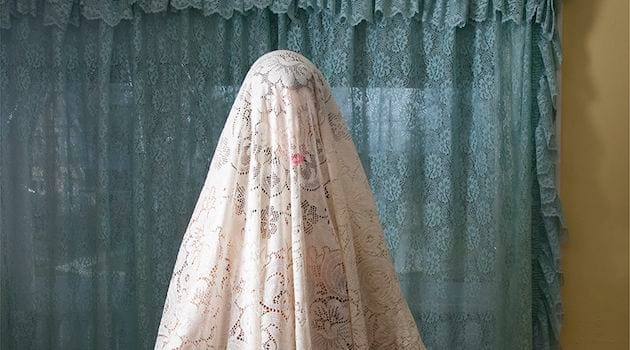The New Abnormal
The creatures in Alison Brady’s portraits escaped from an Ambien nightmare and are hanging around the house, scaring the cat. Some images may be NSFW.

Interview by Nicole Pasulka
TMN: When we interviewed you two years ago, you described your photographs as representing, “the unnerved feeling one gets when the familiar turns alien and frightening.” I love that explanation. These images are definitely unnerving. Is this idea still guiding your work?
Alison Brady: Yes, drawing an uncanny effect out of ordinary props/models/sets continues to be of interest to me. I think the visual possibilities with this concept have almost limitless potential. Continue reading ↓
Her show, “sincerely yours” is on view at housprojects gallery through October 22, 2011. All images © copyright the artist, all rights reserved.






Interview continued
TMN: How do you set up these shots?
AB: I begin with a general visual idea but always leave plenty of room for experimentation. The variables of model/props/location tend to come together on their own organically so I don’t orchestrate these elements too rigidly.
TMN: Has your process evolved or changed over the years?
AB: Not in any significant way, other than it getting more streamlined with practice and learning from trial and error.
TMN: I can see some common themes in your work—lumpy stockings, two-legged creatures, a mouth full of strings. Any sense of what attracts you to these ideas or images? Why do you come back to them?
AB: I’m looking to create imagery that represents the stickier, darker corners of the subconscious mind—the parts we don’t like to revisit. The odd visual themes recur in my work the way an unpleasant memory resurfaces, continually haunting you.
There were certainly some episodes from my childhood that subconsciously inspire elements of anxiety and fear in my work. For instance, in the house I was raised in, there was a hole in the wall at the bottom step of the staircase leading to my brothers’ and my bedrooms. My older brother would tell me a demon lived in the hole and that if I walked too slowly up the stairs, it would seize my legs and pull me into its lair. I was deathly afraid of that hole and would imagine a disfigured hand grabbing at my feet as I ran up the stairs each time.
TMN: I read that this particular series of images is an exploration of trauma. What about trauma is interesting to you? Could these images be cathartic, or is the trauma locked in?
AB: I am interested in the idea of trauma in the sense that it is an emotional reflection of something distressing that happened in the past and can be somewhat buried… to the point that even the traumatized person is unaware of the gravity of his or her state of shock. Often the conscious mind is unaware of parts of the unconscious that inform it—in dreams or other mind states these parts present themselves in a different and unfamiliar language than what we’re used to. But I think this new series has more to do with the contradictions of social and psychological/private selves. As Georges Bataille said, “Truth only has one face, that of violent contradiction.”
I find the idea of projection very interesting; everyone is projecting their own longing, values, judgments, and feelings onto their surroundings and themselves. In doing so it becomes clear that the line between our external and internal selves is blurred at best. In addressing this disparity between our “selves” in my imagery, I think that the process has been cathartic.
